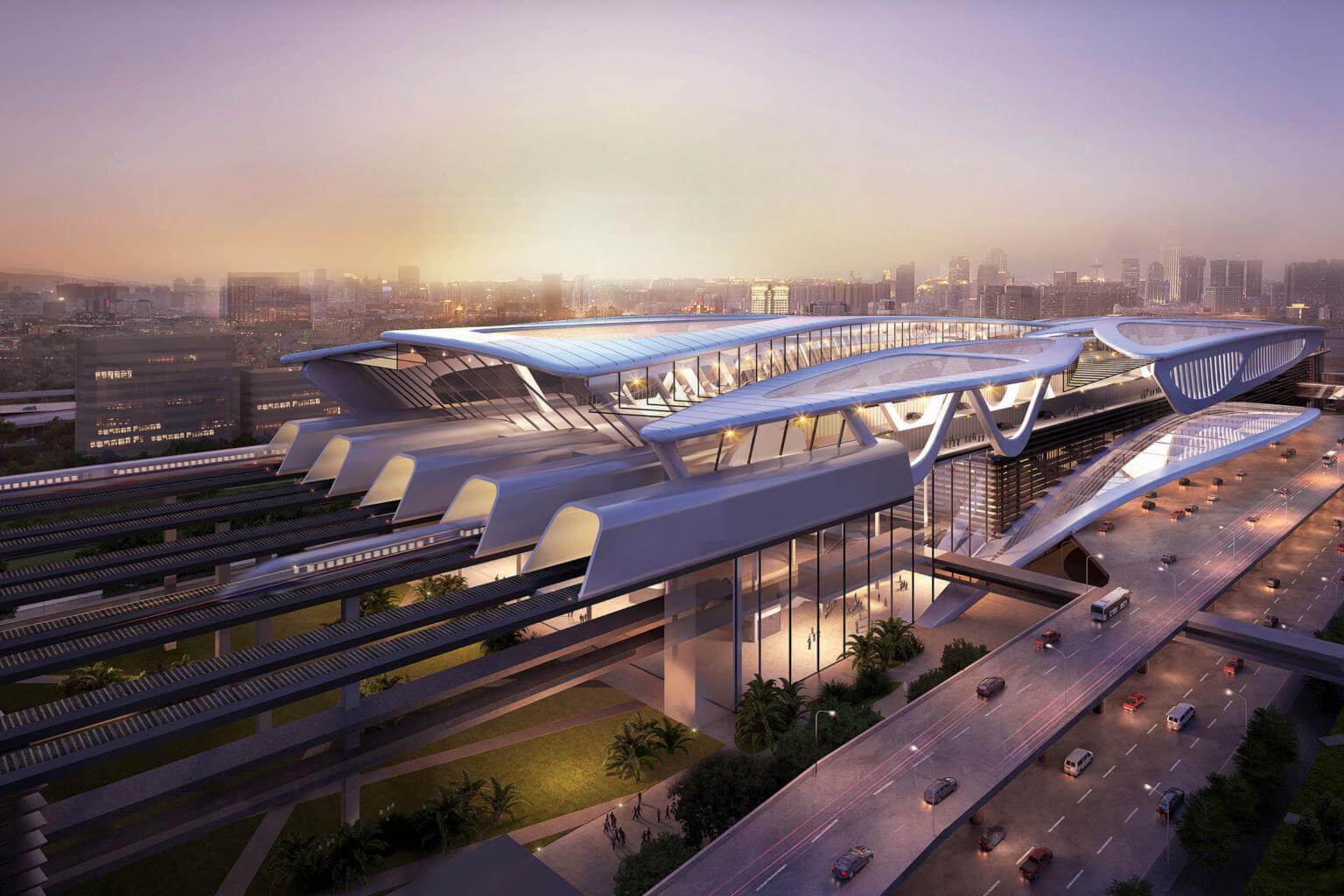End of the line: 3 questions you may have about the KL-S'pore HSR, which is in jeopardy
Sign up now: Get ST's newsletters delivered to your inbox

An artist's impression of the Bandar Malaysia stations, which was to be the first station on the KL-Singapore HSR.
PHOTO: EDELMAN
Ng Jun Sen
Follow topic:
SINGAPORE - After taking power, new Malaysian Prime Minister Mahathir Mohamad announced that his government intends to scrap the Kuala Lumpur-Singapore high-speed rail (HSR), in a move to control government spending and reduce the nation's RM1 trillion (S$337 billion) debt burden.
The Mahathir administration has said that the cost of building the line, at RM110 billion (S$37 billion), is prohibitive considering the state of Malaysia's finances.
Singapore has since requested through diplomatic channels that the Malaysian government clarify its position on the HSR, saying that it is continuing to incur costs on the project.
Both sides had hailed the 350km line as a marquee project that would bring numerous benefits when leaders signed a binding legal agreement to build it in 2016.
This week's Insight looks at three questions that have arisen from the HSR's impending cancellation.
1. Why is Malaysia scrapping the project?
The writing was on the wall for various signature projects in Malaysia under vanquished former premier Najib Razak, from the moment it became clear that Dr Mahathir had won the May 9 elections.
This included the HSR project with Singapore.
Yet for most observers, the announcement that Kuala Lumpur was scrapping the 350-km line to Singapore came a lot quicker than expected, as it was the China-backed East Coast Rail Link (ECRL) project that was singled out for heavy criticism by the Mahathir-led Pakatan Harapan coalition during the recent election campaign.
But, with a huge price tag and no work yet on the ground, it was the HSR that became the perfect low-hanging fruit for a new administration vowing to take the axe to debts and liabilities which it said had ballooned to over RM1 trillion under the ousted Barisan Nasional (BN) government.
The ECRL was a difficult tangle to unwind. Some RM20 billion of the China Exim bank loan was already drawn down and paid directly to the contractor, China Communications and Construction Co.
In interviews and press conferences in the past week, Dr Mahathir responded to queries on the HSR by affirming that Putrajaya will drop the deal, subject to discussions with the Singapore Government.
2. Who wins and who loses if the project is cancelled?
In Singapore, the cancellation could take some of the shine off the Jurong Lake District, a bold mixed-use precinct envisioned as the country's second Central Business District, observers reckon. Some also question if the vision of Jurong as a second central business district is still viable.
Construction companies, research firms and sub-contractors on both sides of the Causeway which won tenders for the project would also be affected. Businesses like Genting Singapore, which opened a hotel in the area, are likely short-term losers as well.
Some property-owners in the Jurong area also stand to lose out in terms of possible financial gain. At Ivory Heights condominium in Jurong East, for example, residents had been holding out hope for an en bloc sale.
Golfers have already been hit by the project, due to losing their premises. Jurong Country Club was acquired in 2015 to make way for the HSR terminus, while Raffles Country Club was to be acquired by next month.
Meanwhile, airlines and bus companies look set to come away as winners if the HSR falls through, say experts, as it was slated to draw away passengers from those transport modes.
Asian transport analyst Corrine Png says that with the reversal in the potential earnings loss for the aviation sector, several airlines that ply the KL-Singapore route and both Changi and Malaysia airports would benefit from the decision. Service providers such as Sats and SIA Engineering would also receive a boost.
AmBank Research said the new Malaysian government's decision was "a wise move as the project cost is more likely to outweigh its economic benefits" as the spill-over impact from the RM110 billion outlay "may not be significant".
However, Malaysian firms appointed as project delivery partners - Gamuda, YTL and MRCB - all skidded further on the local bourse when the announcement came that the HSR was being scrapped.
Some first movers in the property sector may also have found themselves saddled with less valuable landbanks now along the planned HSR track.
3. Why was the HSR mooted in the first place?
The project was hailed as a "game changer" when first proposed by Malaysia at the 2013 annual leaders' retreat in Singapore.
Prime Minister Lee Hsien Loong and former Malaysian Prime Minister Najib Razak said it would dramatically raise connectivity, enhance business linkages and bring the peoples of Malaysia and Singapore closer together.
After Datuk Seri Najib became prime minister in 2009, his administration released Malaysia's Economic Transformation Programme. It described a KL-Singapore high-speed link as a high-impact project that was expected to add 28,700 jobs and contribute RM6.2 billion to Malaysia's gross domestic product.
After the 2013 leaders' retreat, both sides continued deliberating on key issues, such as the location of the stations, the alignment of the rail line, and the project's financing and management.
The project also attracted proposals from Chinese, Japanese, French, German and American companies.
The landmark moment was finally reached in 2016, when both nations inked a memorandum of understanding for the construction of the project and a legally binding bilateral agreement.
Construction was due to start next year, but even as tenders were being awarded to companies on both sides earlier this year, along came the watershed 14th Malaysian general election. The rest is history.

